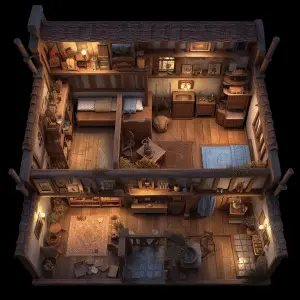In recent years, the field of Interior Design Education has been undergoing a transformative shift, with online learning platforms playing a pivotal role in reshaping how knowledge is imparted and acquired. This shift is particularly evident in disciplines that require a blend of creativity, technical skills, and practical experience, such as interior design. Traditional brick-and-mortar classrooms are no longer the sole avenue for learning, as innovations in online learning platforms have ushered in a new era of dynamic and interactive interior design education.
Exploring Virtual Studios, AR/VR Immersion, and Personalized Learning Paths: Interior Design Education
1. Virtual Design Studios: Unleashing Creativity

One of the most exciting innovations in online interior design education is the emergence of virtual design studios. These platforms provide students with powerful tools to explore their creative potential in a digital environment. With advanced 3D modeling software and interactive interfaces, students can experiment with various design elements, materials, and layouts, gaining a deeper understanding of spatial aesthetics. Virtual design studios enable collaborative projects, allowing students to work together irrespective of geographical barriers, thereby simulating the real-world dynamics of a design team.
2. Augmented Reality (AR) and Virtual Reality (VR) Immersion
AR and VR technologies have found their way into interior design education, revolutionizing how students experience and visualize spaces. Through VR headsets or AR apps, learners can virtually step into their designs, gaining a sense of scale and proportion that is often challenging to convey through traditional 2D representations. This immersive experience enhances spatial comprehension and enables students to identify design flaws and opportunities for improvement. Whether exploring a conceptual blueprint or presenting a finished project to clients, AR and VR bring a new level of engagement and realism to interior design education.

3. Personalized Learning Paths
Online learning platforms for interior design recognize that each student has a unique learning style, pace, and set of strengths. Through the use of data analytics and AI, these platforms can tailor learning paths to individual students. By analyzing their progress, preferences, and performance, the platform can recommend specific modules, assignments, and resources that align with their needs. This personalized approach not only enhances the learning experience but also promotes self-directed learning and a deeper connection to the subject matter.
4. Industry Integration and Real-World Simulations

Staying current with industry trends and practices is crucial in the fast-paced world of interior design. Online platforms are now incorporating real-world simulations and industry integration to bridge the gap between academia and professional practice. Students can work on mock design projects that mirror real-life scenarios, engaging with challenges and constraints commonly faced by interior designers. Collaborations with industry professionals, guest lectures, and access to industry-standard tools further equip students with the practical skills and knowledge needed to excel in their careers.

5. Interactive Feedback and Assessment
Gone are the days of waiting for weeks to receive feedback on assignments. Online learning platforms offer real-time assessment and feedback mechanisms, allowing students to continuously improve their work. Whether it’s a design concept, a mood board, or a presentation, instructors can provide immediate feedback, fostering a sense of iterative refinement. This dynamic exchange not only accelerates the learning process but also nurtures a growth mindset where students embrace challenges and setbacks as opportunities to learn and grow.
Conclusion
Innovations in online learning platforms have propelled interior design education into a new era of accessibility, engagement, and creativity. Virtual design studios, AR/VR immersion, personalized learning paths, industry integration, and interactive feedback mechanisms are transforming how students learn and interact with the discipline. As technology continues to evolve, the future of interior design education holds the promise of even more immersive and dynamic learning experiences, empowering the designers of tomorrow to shape spaces that inspire and captivate.












